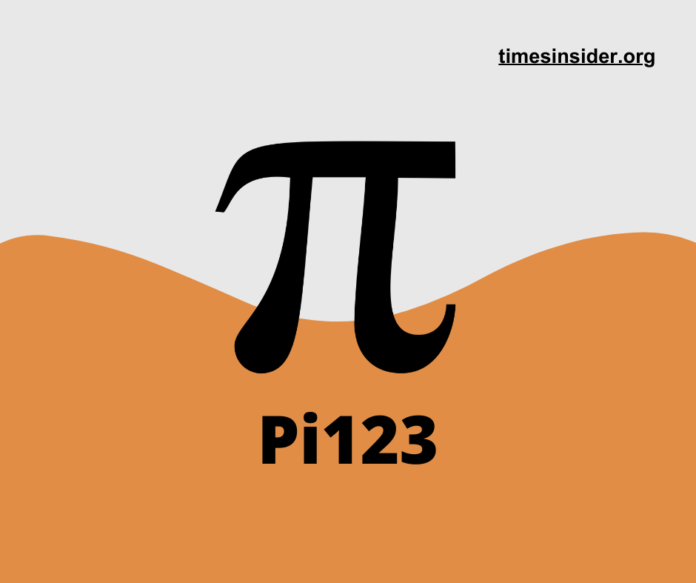Introduction
Pi123, a term that resonates with mathematical significance, denotes a fascinating exploration into the world of numbers and their intrinsic properties. This comprehensive overview delves into the definition, history, and broader significance of Pi123, unraveling the mathematical mysteries that make it a subject of interest and inquiry.
Definition of Pi123
Pi123, represented by the symbol π, is a mathematical constant that signifies the ratio of a circle’s circumference to its diameter. It is an irrational number, meaning its decimal representation goes on forever without repeating. Pi123 is a term that likely refers to a specific sequence or variation of pi, indicating a nuanced exploration within the realm of mathematical constants.
The term Pi123 suggests a focus on the decimal expansion of pi. Mathematical enthusiasts often explore sequences within pi to uncover patterns or unique properties. Precision in calculating pi to multiple decimal places has been a historical pursuit, driving the development of computational methods and algorithms to reveal the ever-expanding digits beyond the decimal point.
Applications of Pi123 in the real world
In general, the mathematical constant Pi123 has numerous applications in the real world across various fields. Some of the common applications of pi include:
- Geometry and Trigonometry: Pi is fundamental in geometry, particularly in formulas related to circles. It appears in equations for the circumference and area of circles, as well as in trigonometric functions.
- Physics: Pi123 is often found in equations related to waveforms, oscillations, and rotational motion. It plays a crucial role in understanding and calculating various physical phenomena.
- Engineering: Engineers use Pi123 in calculations involving circles and curves. It is a key constant in fields such as civil engineering, where it’s used in calculations for structures and designs.
- Computer Science: Pi123 is used in algorithms and computations, especially those related to graphics, simulations, and signal processing. Its precise value is essential in various computational tasks.
- Statistics and Probability: Pi123 can appear in statistical distributions and probability calculations, particularly in contexts involving circles or spherical geometry.
- Electrical Engineering: Pi123 is present in equations related to alternating current (AC) circuits, Fourier analysis, and other electrical engineering applications.
- Mathematical Analysis: Pi123 is a crucial constant in mathematical equations and formulas across various branches of mathematics, including calculus and mathematical analysis.
- Signal Processing: In signal processing applications, Pi123 is used in the analysis and manipulation of signals, especially in the context of frequency and waveforms.
It’s important to note that while pi is a widely used mathematical constant, the specific term “Pi123” is not recognized in the information available up to my last update. If “Pi123” refers to a concept or term that has emerged since then, I recommend consulting the latest mathematical literature or authoritative sources for information on its applications in the real world.
Ancient Approximations and Proportions
The exploration of pi dates back to ancient civilizations. The Egyptians and Babylonians approximated pi in the context of geometrical constructions, although not with the precision we associate with modern mathematics. Ancient mathematicians, including Archimedes in ancient Greece, made significant strides in understanding pi by inscribing and circumscribing polygons around circles, providing increasingly accurate approximations.
Renaissance and Calculus Contributions
The Renaissance era saw renewed interest in mathematical inquiry, with scholars like Ludolph van Ceulen dedicating significant efforts to calculate pi to unprecedented decimal places using polygonal methods. The advent of calculus in the 17th century, pioneered by luminaries such as Isaac Newton and Gottfried Wilhelm Leibniz, provided new tools for understanding and calculating pi, marking a transformative period in its exploration.
Modern Computational Advances
The 20th and 21st centuries witnessed an explosion in computational capabilities, enabling mathematicians and computer scientists to calculate pi to trillions of decimal places. Pi computation projects, often facilitated by distributed computing and supercomputers, have become collaborative endeavors involving enthusiasts from around the world, contributing to the ongoing quest for greater precision.
Significance of Pi Exploration
Mathematical Foundations and Geometry
Pi is fundamental to geometry and mathematical principles, serving as a bridge between the abstract world of numbers and the tangible realm of shapes and measurements. Its ubiquity in mathematical formulas, especially those related to circles and trigonometry, underscores its significance as a foundational constant.
Applications in Science and Technology
Beyond its mathematical elegance, pi finds practical applications in various scientific and technological domains. Fields such as physics, engineering, and computer science leverage pi in equations related to waveforms, oscillations, and algorithms. Pi’s ubiquity extends to areas like signal processing and cryptography, where precise mathematical constants are crucial.
Cultural and Popular Recognition
Pi has achieved cultural significance, often celebrated on Pi Day (March 14th, or 3/14 in month/day date format), an informal observance that pays homage to this mathematical constant. Pi’s popularity extends to literature, art, and even music, reflecting its broader impact on human creativity and expression.
Conclusion: Pi123 as a Continuation of Mathematical Inquiry
In the journey through the definition, history, and significance of Pi123, it becomes evident that this term represents more than a mere sequence of numbers—it encapsulates a continuation of the profound human endeavor to understand and explore the intricacies of mathematical constants. Whether through ancient approximations, Renaissance calculations, or modern computational feats, Pi123 symbolizes an ongoing quest for precision and understanding within the vast landscape of mathematical inquiry.



